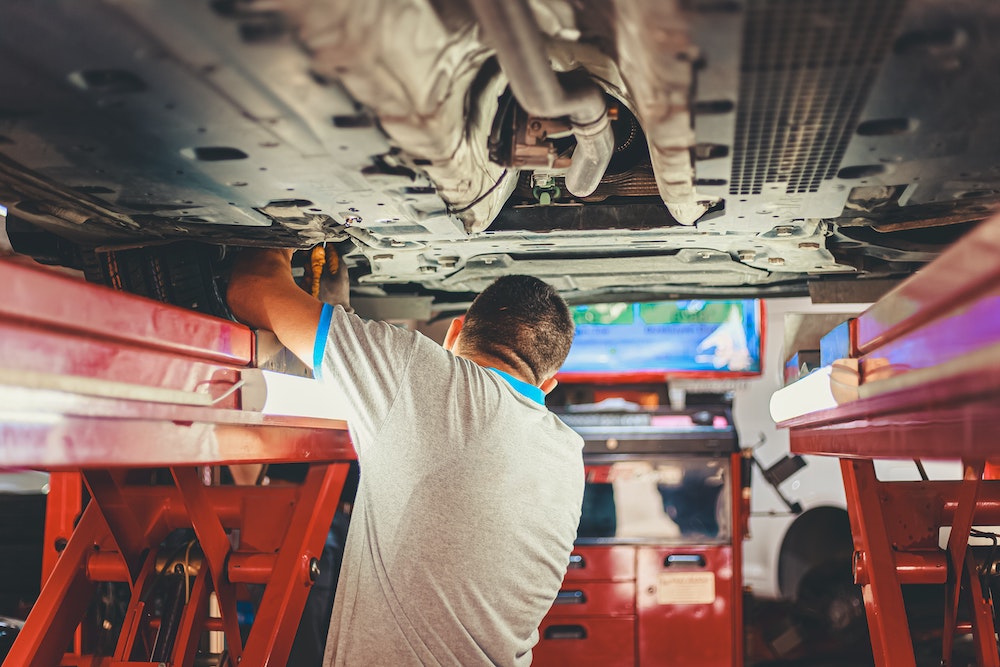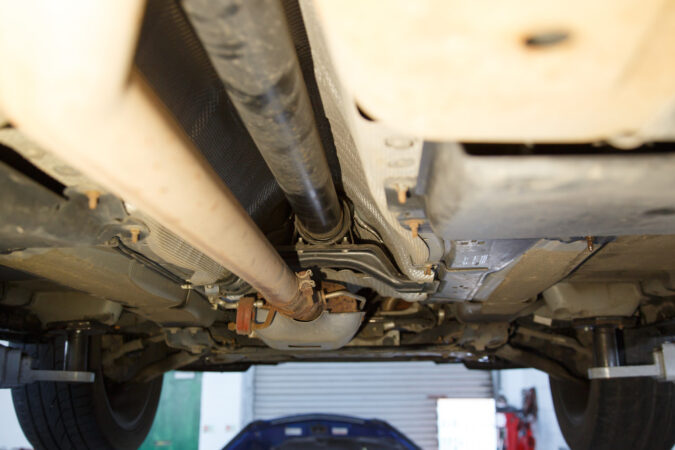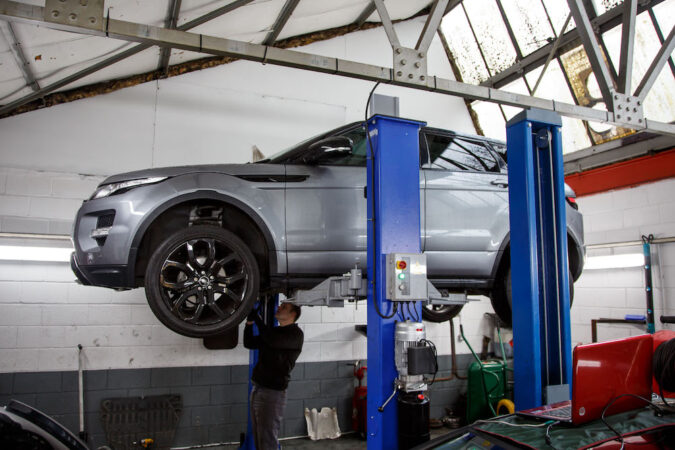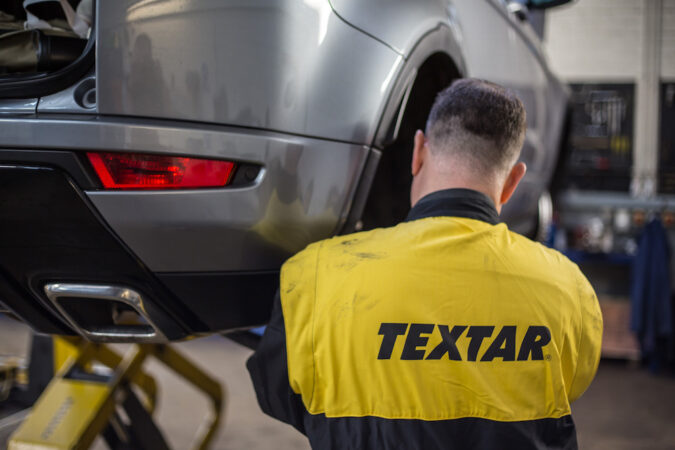The cost to replace front differential varies by vehicle type, model, location, and mechanic. Differentials are mechanical devices that permit variations in wheel speed along a single axle. Differentials exist in vehicles.
When you turn, the distance traveled by one of your wheels will be smaller than the distance traveled by the other. If there weren’t a differential, the tires on the driven wheels would strive to “meet in the center” and rotate at the same speed as each other, which would cause them to scrub or skip.
Differentials have a long history dating back to the 1st millennium BC. According to historians, simple, early differentials were used in chariots and wagons to solve the problem of bad handling in turns. This innovation has its roots in ancient China.
This article will discuss the cost to replace front differentials, its common problems, and solutions when encountering certain symptoms. Let’s dive in properly, shall we?
- The Front Differential
- Types Of Differential
- Differential Servicing
- Bad Differential Symptoms
- Signs Of Low Differential Fluid
- What Is A Rebuilt Differential
- Differential Leak Stop
- Last Words
- FAQs
Front Differential
Your vehicle’s front differential is the component in charge of transferring torque and power from the engine to the front tires of a car. As you get closer to the turn’s apex, you’ll notice that your vehicle’s left and right wheels will rotate at separate speeds. For instance, when making a left turn, the car’s tires on the right must travel further than the tires on the car’s inner left.
The differential makes it possible for the wheels to spin at different speeds. The front differential ensures effective power transmission from the engine to both wheels.
With time, your front differential will start developing faults. Regardless of whether it’s a front-wheel drive (FWD) or an all-wheel drive (AWD) drivetrain. Depending on the severity of the damage, the cost to replace front differential might range from something as simple as replacing a seal to something as extensive as rebuilding the whole structure.
Types Of Differential
Differentials come in four types:
- Open differential
- Locking differential
- Limited slip differential and
- Torque vectoring differential
Cost To Replace Front Differential, Types #1: Open Differential
The open differential is the most common type of differential used by most runabout vehicles, like sedans or economy cars. It works by splitting the force from a car’s engine into two; hence, two tires rotate at independent speeds.
This type of differential works perfectly in ideal road conditions, but it doesn’t handle well once the vehicle plies gravel, snowy, or iced roads. Due to its common nature, the open differential is way cheaper to fix than other types of differentials.
Cost To Replace Front Differential, Types #2: Locking Differential
As the name implies, this differential “locks” both tires to rotate at the same speed. This mechanism causes bad handling, so it isn’t a recommended type of differential.
However, most big trucks use this type of differential as it gives room for more tire traction, which is the most needed component for heavy-duty trucks. This differential is also used in performance cars for extreme sports like off-road or mountain climbing. A locked differential provides the much-needed “equal power” for both wheels.
Cost To Replace Front Differential, Types #3: Limited Slip Differential
This type of differential is like a hybrid of open and locked differentials. Under normal conditions, it works like an open differential by dividing the engine torque, enabling both tires to rotate at different speeds.
But its hybrid nature kicks in once one of the wheels loses traction during a sharp turn or corner. Once this happens, the limited-slip differential immediately “locks” both wheels, and equal driving force is applied to both wheels, resulting in a locking differential.
That is particularly used in race or sports cars as it gives room for more traction and vehicle handling during races. However, the cost of repairing a limited-slip differential is higher than the previously mentioned two types.
Cost To Replace Front Differential, Types #4: Torque Vectoring Differential
This type of differential is similar to the limited-slip differential; a major difference is that the limited slip differential operates mechanically using clutches while the torque vectoring differential operates using sensors and computers. It is a more advanced system that can precisely control the torque or engine power delivered to each wheel with added precision, with the help of additional gear trains.
It works by giving the tire more torque with more traction, greatly improving handling, which is significant at high speeds. That is the most advanced and expensive differential system used by recent supercars.
Differential Service
Differential servicing deals with all it takes to keep your car’s front or rear wheel differentials in shape. You’ll have to hire a mechanic to drain the old fluid when a car requires differential service.
After draining, the technician replaces it with a new differential fluid that satisfies the manufacturer’s requirements or criteria. That will ensure that the differential continues to function properly.
When working on the rear differential, the technician or mechanic will first filter the old fluid out before replacing it with new differential fluid, using a slightly different process. That is done to protect the differential from damage.
The standard suggestion is between 35,000 and 50,000 miles between differential fluid changes, or at the very least, you should get one before you’ve traveled 50,000 miles.
Many industry professionals suggest scheduling differential maintenance simultaneously as you replace old fluids since it might be difficult to remember the last time you serviced your differential.
Differential Fluid Change Cost
A mechanic or you should change the gear oil (differential fluid) periodically to achieve maximum front differential performance if you understand the technicalities involved. A gear oil (differential fluid) change would cost about $90 to $150. That includes both the gear oil and the labor costs. Labor should cost you around $50 to $80, depending on your location or type of vehicle.
As previously mentioned, change the front differential fluid (gear oil) periodically. We advise car owners to always check the manufacturer’s manual for the recommended mileage. Many manufacturers advise a fluid change somewhere around 25,000 miles. Others can extend their gear oil (front differential fluid change) to around 30,000–35,000 miles.
A skilled mechanic should change the front differential fluid as its nature is very technical, and mistakes can amount to changing the entire differential component. Hence, it will cost you significantly more.
Rebuilt Differentials
Just as the name implies, a rebuilt front differential is simply a differential used by a vehicle but repaired and made into another functional differential. Skilled mechanics or technicians strictly perform that.
How Is A Differential Rebuilt
When rebuilding a differential, a mechanic first inspects and detects any faults or worn-out parts in the differential. That can involve determining if all the good parts of the differential are within the required specification.
If they are not in the specification, the mechanic reconstructs the components to bring the whole system back within the required specification.
Replace worn-out parts with working components. The replacement gives the front differential a new lifespan similar to that of a piece of brand-new equipment.
Pros And Cons Of A Rebuilt Front Differential
The most significant benefit of using a rebuilt front differential lies in its lower cost. The cost of completely replacing a front differential is about $500 to $2000. At the same time, a rebuilt one costs just about $1000.
However, getting a rebuilt differential from a low-skilled technician could amount to a significant drop in performance. Technical skills vary greatly from one mechanic to the other.
When you buy a rebuilt differential from a low-skilled mechanic, the result is that it will break down in the near future. To get the best-rebuilt differential, experts advise you to review previous mechanics’ performance to ascertain their technical skills.
A good mechanic should also be able to provide a warranty on the rebuilt differential. So, make sure you try to find the best car repair shop near me.
Bad Differential Symptoms
A front differential and rear differential can go bad for a regular car owner at any moment. Before looking up the cost to replace front differential, check these signs to tell if your front differential has developed a fault and needs replacement. The signs indicating a bad front differential include:
Cost To Replace Front Differential, Symptoms #1: Excessive Noise
Whining, roaring, or humming noises might indicate a front or rear differential problem. When a bearing in a car axle is worn out and damaged, the vehicle tends to make a buzzing or whirring sound.
In addition, a damaged axle might result from a defective front differential. Thus, servicing and inspecting the axle anytime the differential is worked on is essential. Also, when pinion gears or ring gears are damaged, you can hear a roaring or whining noise. An excessive amount of noise noticed when driving is a common symptom of a deteriorating rear axle failure.
Cost To Replace Front Differential, Symptoms #2: Differential Overheating
When the front gear oil (differential fluid) runs low, the gears tend to rub against each other, causing overheating of the differential. We recommend checking the differential’s temperature regularly to ensure overheating doesn’t occur. Overheating due to low fluid oil can cause wear and tear to the system, requiring a complete differential replacement. That attracts more cost.
Cost To Replace Front Differential, Symptoms #3: Difficulty In Handling
When your front differential goes bad, you will notice difficult steering handling, especially while making turns or cutting corners. This bad handling can cause an accident when not properly handled by experts. Hence, it is advised that whenever you notice your car’s bad handling, pull over immediately and call for assistance.
Cost To Replace Front Differential, Symptoms #4: Vibrations
Unusual vibrations coming from a vehicle shouldn’t be taken for granted. A lot of malfunctions can cause vibrations in a car. One of which is a bad front differential. Ignoring these vibrations can result in a total collapse of the entry differential system, hence the need for it to be tackled as soon as possible.
Signs Of Low Differential Fluid
Low differential fluid is also known as gear oil. Some signs will tell you your gear oil is low and may need replacement.
Cost To Replace Front Differential, Low Fluid Signs #1: Vibrations
When your gear oil is depleted, you will notice strange vibrations coming from your front differential. That is not a good sign and should be tackled immediately to avoid bigger problems.
Cost To Replace Front Differential, Low Fluid Signs #2: Smoky Or Burnt Oil Odor
An odor emanating from your differential area indicates low or bad gear oil. Under lubrication of various differential parts causes a smoke-like odor due to friction and overheating from moving parts.
Another cause of the burnt oil odor can be bad gear oil or expired differential fluid.
Cost To Replace Front Differential, Low Fluid Signs #3: Strange Noise
Humming, whirring, or roaring noises can be heard when the front differential oil level is depleted or bad (for more insight, check out our explainer on how much oil does my car need). These noises can alternate depending on the velocity of the moving vehicle.
Differential Leak Stop
Differential fluid is located in the differential tubes, which convey the fluid from a differential to an axle. With constant use of a vehicle, these tubes are subjected to wear and tear; hence leaking occurs. A significant amount of differential fluid leaking out will cause moving parts to grind together and cause damage.
You will notice the leaking of differential fluid if one or more of these differential components goes bad.
1. Bad Differential Gaskets
A differential gasket’s function is to ensure that a differential case and a differential cover don’t leak the gear oil (differential fluid). Most gaskets are made using rubber or silicon, either of which can easily break down or get worn out over time. If that happens, you can’t prevent a leak unless you replace the whole differential gasket.
Depending on the car model or make, replacing a bad gasket can cost you around $187 to $300.
2. Differential Pinion Seals
The driveshaft entry point into the differential is sealed by the pinion seal, which is placed at the differential’s rear. If this seal is broken or worn, it will allow differential fluid to leak. Once you notice any wear on this seal, you should replace it to avoid additional damage.
Replacing a bad differential pinion seal can cost around $250 to $300. That doesn’t include taxes or levies, which vary geographically.
3. Damaged Differential Cover
The differential cover prevents dirt and moisture from entering the differential’s inner components, which is an important safety feature. This cover might cause leaks and other differential problems if it were damaged.
Rust and impact are the two main factors that can often cause differential cover damage. An example of the latter would be a rock colliding with it while the vehicle is in motion. You may have to buy a new cover if you can’t mend the existing one.
4. Bad Differential Side Seals
There are a pair of side seals on each differential, and their principal job is to stop dirt and debris from getting into the bearings and onto the moving axles.
These side seals are rubber or silicon, which can wear out with time. If these seals are damaged or worn, there is a possibility that fluid may leak from your differential onto your brake pads.
If you suspect that your side seals are leaking, there is no time to waste; you should acquire a new set as soon as possible to stop the situation from worsening.
Replacing side seals can cost you around $300.
5. Leaks in Differential Tubes
Differential tubes convey the gear oil (differential fluid) from the differential to the motor axle. With time, these tubes wear out and cause oil leaks. Minimal differential fluid levels will cause damage to the moving parts of an axle. If a leak is discovered in the differential tubes or your differential fluid level falls below the minimum level, you need to replace them as soon as possible.
6. Worn Axle Seal
The axle seal may be found in the space between the end of the axle and the beginning of the differential. This seal ensures that differential fluid stays within the axle, where it deserves to be, and does not leak out. If this seal is worn out or damaged, it will eventually result in a leaky differential. If you wait to fix a leaking axle seal on your car, the damage it deals to your vehicle will increase.
When replacing a damaged axle in your car, you should budget about $150 to $300, exclusive of tax levies.
Note: Stopping an emergency gear fluid leak can be done in various ways. But the most prominent way is to apply an additive that prevents minor leaks in your front differential.
Last Words On Cost To Replace Front Differential
Differentials are important components of a vehicle that transfer power from the engine to the wheels. They work to improve vehicle handling around corners and turns. We have four main differentials: open differential, locking differential, limited slip differential, and torque vectoring differential.
Each of the above-mentioned has its advantages and disadvantages. The open differential splits the engine power into two, allowing each wheel to rotate at different speeds. The locking differential “locks” both wheels, and the same engine power is supplied to both, making them rotate at the same speed. This type increases traction but reduces handling.
A limited-slip differential is like a hybrid of the two types mentioned above. It varies between “Open” and “Locked” depending on the condition. It makes use of mechanical clutches to detect and act accordingly.
The torque vectoring differential is the advanced limited-slip differential, as it uses computers and sensors to distribute torque as required accurately. This precision greatly improves handling and is used for supercars.
The cost to replace front differential varies. Technicians may charge an average of $150 to replace a bad or depleted differential fluid. Excessive noise, vibrations, and bad vehicle handling are some of the signs that show your front differential has developed a fault.
This fault can originate from components like bad differential gaskets, pinion seals, leaks in differential tubes, and damaged axle seals. Overall, the cost to replace front differential averages $1500.
FAQs On Cost To Replace Front Differential
What Is A Differential
Differentials are essential vehicle components that transmit power from the engine to the wheels. They help to increase the vehicle’s cornering and turning performance. Four primary differential kinds exist; the open differential, the locking differential, the limited-slip differential, and the torque vectoring differential.
What Does A Differential Do
The differential enables the wheels to spin at various speeds while efficiently transferring power to both. Because of the differential, the wheels can revolve at different speeds depending on the conditions. Overall, the differential improves vehicle handling.
How To Fix Differential Noise
Most of the time, noise coming from your differential is caused by bad or depleted differential fluid (also known as gear oil). A depleted differential oil can cause moving parts to grind together. Hence, the friction can cause whirring, humming, or roaring noises. A depleted differential oil can be caused by bad differential tubes, gaskets, or pinion seals. Hence, most of the time, changing your differential oil can fix differential noise.
Can A Bad Differential Cause Transmission Problems
Absolutely yes! A bad differential can cause friction in moving metal parts, generating heat that weakens gears. Your transmission system can collapse when the gears are weakened due to friction. Hence, it is advised that a differential problem be tackled immediately to avoid placing more bills on your table.
How Much Does It Cost To Replace Rear Differential
On average, replacing a bad rear differential costs about $1000 to $3500. This amount varies on the type of differential and if you’re going for a rebuilt rear differential or a new rear differential.
How Much To Fix Axle On Car
Fixing a car axle can cost around 300 to 700 dollars, including labor and spare parts. There is a wide price variation depending on location and car model. Don’t hesitate to contact your local mechanic for an accurate quote.
What Happens If Rear Differential Goes Out While Driving
Technically, your car can still move if the rear differential goes out while driving. However, it causes great damage if you keep driving the vehicle like that, and it’s most likely that your car will come to a halt suddenly. Endeavor to pull over whenever your rear differential goes out while driving, then call for help.
How Much To Change Differential Fluid
Changing a differential fluid will cost about 70 to 150 dollars (labor and differential fluid costs inclusive). Always employ a skilled technician to avoid complications that may cost you more money.
What Is The Differential On A Truck
Most heavy-duty trucks make use of locking differentials. That improves tire traction but reduces vehicle handling. To achieve this, the locking differential delivers equal engine torque to the wheels.
Can Low Differential Fluid Cause Vibration
The answer is yes. When your gear oil is depleted, you will notice strange vibrations coming from your front differential. That is not a good sign and should be tackled immediately to avoid bigger problems.




